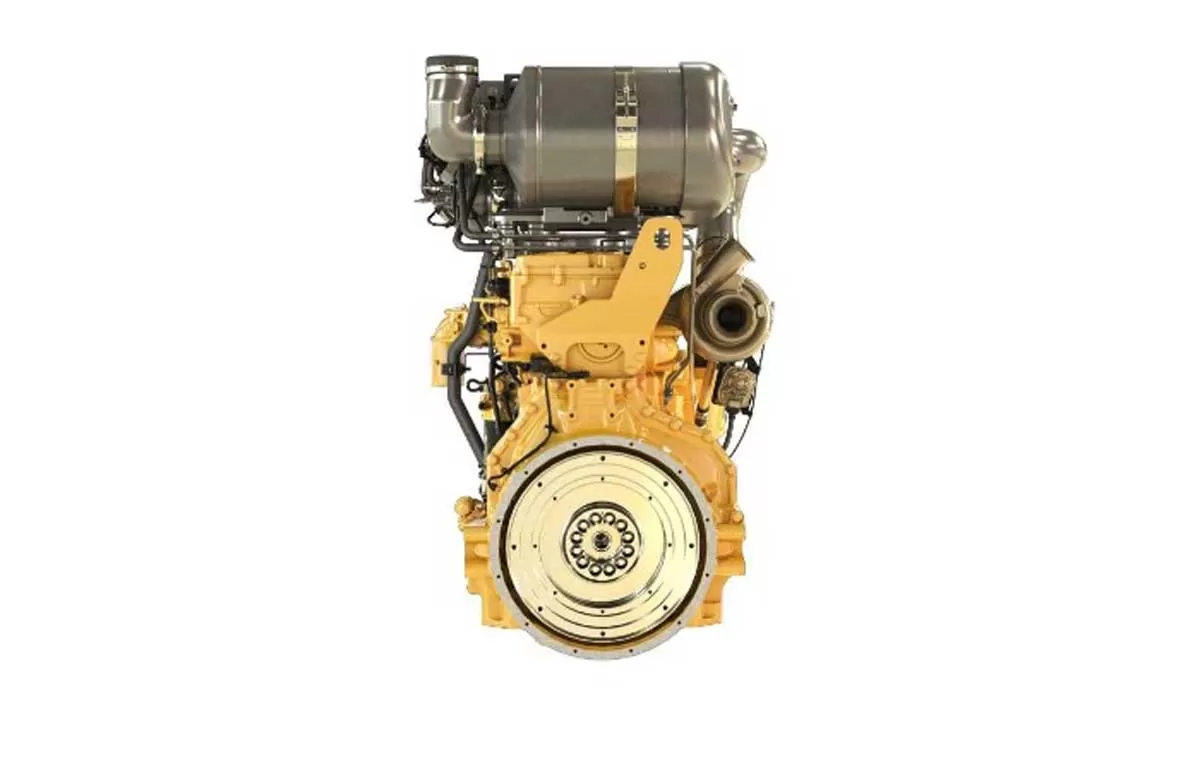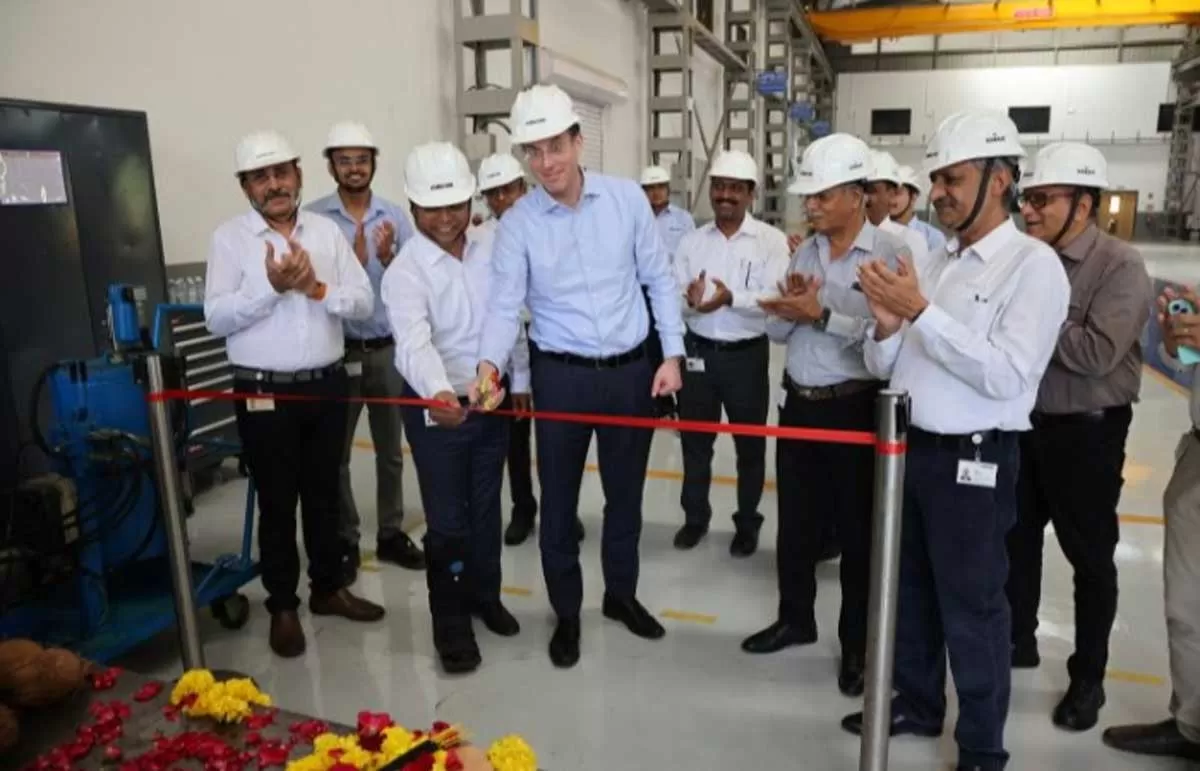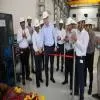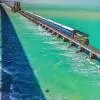Caterpillar Industrial Power Systems will showcase a range of optimised, fuel flexible engines, integrated advanced power technologies and services solutions at bauma Munich from April 7-13. The theme, “A journey to a lower-carbon future,” highlights Caterpillar’s ongoing commitment to sustainably powering a better world.
The bauma Munich exhibit in Hall A4, stand 336, includes the award winning Cat® C13D and a new high power C3.6 delivering 106 kW (142 hp). The stand features the first showing of a series hybrid power expansion powertrain, part of a growing electrification ecosystem of solutions from Caterpillar; alongside a hydrogen engine testing exhibit highlighting the ongoing fuels development work by Caterpillar. This will be complemented by a showcase of Cat parts and services solutions including condition monitoring and a remanufactured C7.
Powering today – the new C13D, optimised and fuel flexible engine
The 13-litre diesel engine platform is designed to achieve best-in-class power density, torque and fuel efficiency for optimising the performance of heavy duty off-highway applications. Engineered to Caterpillar’s standards for reliability and productivity, the inline, six-cylinder Cat C13D engine platform will offer eight power ratings from 340 to 515 kW (456 to 690 hp) with up to 3,200 Nm of peak torque. Engine mounted aftertreatment and cooling packs will also be available from the factory to reduce installation and validation costs. The C13D will meet the emissions standards of highly regulated markets, such as EU Stage V, U.S. EPA Tier 4 Final, China Nonroad Stage IV, Korea Stage V, and Japan 2014, with models available for less regulated markets.
By supplying more power and torque available from Caterpillar’s current 13-, 15- and single-turbo 18-liter engine platforms, the C13D platform provides an opportunity for original equipment manufacturers (OEMs) to downsize the engine and simplify design, assembly, and supply chain requirements across multiple applications. This consolidation can also reduce maintenance, parts, and technical training complexity for end users.
The Cat C13D, which goes into production in 2026, is designed for use in a wide range of off-highway equipment, including rock crushers, screeners, and grinders; trenchers; agriculture tractors, harvesters and self-propelled sprayers; woodchippers; material-handling equipment; and large industrial pumps.
“Off-highway OEMs and equipment owners face a rapidly evolving business environment that demands improved worksite productivity and reduced operating costs while addressing increasingly stringent emissions standards,” said Steve Ferguson, senior vice president Caterpillar Industrial Power Systems. “Internal combustion engines are the prevailing workhorses on most jobsites around the world, which is why we’ve invested in the next-generation Cat C13D diesel engine platform to address their challenges.”
The engine platform offers up to a 20 per cent increase in power and up to 25 per cent more low speed torque over the previous generation of Cat engines in its power class. It is designed to perform at altitudes of up to 12,000 ft, which is twice as high as legacy Cat engines, and in extreme ambient temperatures as high as 140 F (60 C) and as low as minus 40 F (minus 40 C) with aids. Extended service intervals - 1,000 hours oil and fuel filters - will reduce operating costs and downtime.
By modularising and eliminating components, its architecture is space-protected to accommodate configuration adjustments anticipated for future tiers of emission standards in the U.S. and EU without relocating customer connection points. The Cat C13D engine platform enables the use of renewable liquid fuels such as 100 per cent HVO, up to B20 for models with aftertreatment and B100 for models without aftertreatment.
Further, its core architecture is designed to support future development for a range of alternative fuels such as natural gas and hydrogen. In late 2024 Caterpillar started work on an advanced hydrogen-hybrid project, leveraging the versatile new C13D engine platform. The three-year program will develop a transient-capable system for off-highway applications, demonstrating how state-of-the-art control systems and electric-hybrid components can help hydrogen-fueled engines match the power density and transient performance of traditional diesel engines.
The industrial power stand will also feature the newly available 106 kW C3.6, which has seen a six percent power boost from 100 kW, and is designed to address customers’ needs for more power from a compact package. To highlight the breadth of optimised power solutions available from Caterpillar, the fuel flexible C13D, C9.3B and C2.8 engines, also feature in the Caterpillar exhibit in Hall B6.
Extending lifecycles with aftermarket services and Cat Reman products
To enable customers to extend the lifecycle of their engine across their fleets, Caterpillar is exhibiting a range of flexible parts and services solutions to support each stage of the engine lifecycle including Extended Service Contracts, Customer Value Agreements, parts, repair options and its global dealer network. And an interactive simulator will promote the importance of condition monitoring for proactive diagnostics and right first-time fix to reduce downtime.
The exhibit features a deconstructed Cat C7 Reman engine including Cat remanufactured parts and end-of-life parts, also known as core. The display shows the contrast between core and Cat Reman parts to better highlight the impressive remanufacturing processes that take place in Caterpillar facilities. Cat Reman products help the OEM to extend their machine’s lifecycle, reduce waste and keep the engine running strong. Fully assembled and ready to run, Cat Reman complete engines are dynamometer tested and tuned for like new performance and fuel efficiency. With an extensive offering from simple components to overhaul kits to complete engines, Cat Reman enables customers to reduce downtime, get back into operation fast and benefit from like new performance on the toughest jobs.
Driving tomorrow – new series hybrid power expansion powertrain
With 100 years of expertise and innovation to draw from, we are committed to helping our customers navigate the evolving energy landscape. Caterpillar offers its customers a wide range of options including a variety of non-traditional drivetrain solutions, offering options in both fuel flexibility and a reduction in greenhouse gas (GHG) emissions.
For over 15 years nearly 9,000 Cat products fitted with electric powertrains have been working on customer job sites and in 2024, Cat equipment surpassed 50 million hours of electric drive operations.
At bauma, Caterpillar has combined its diesel electric experience with its battery experience to showcase a hybrid solution for customers looking to reduce their emissions and increase system efficiency. The series hybrid power expansion powertrain is an advanced electrified system designed to optimise power efficiency, performance, and fuel consumption across demanding applications.
At its core, a rugged Cat engine drives a generator, converting mechanical energy into electrical power. The inverter manages power distribution, directing energy from the generator and battery to the electric motors, which drive the machine. “This is an ideal solution to meet the current needs of many of our customers,” said Ferguson. “Combining the engine and battery provides higher power capability than using either an engine or battery alone. This allows for controls optimisation to distribute power from multiple sources, maximizing powertrain efficiency. Customers benefit from reduced downtime, improved fuel efficiency, and lowered repair frequency, minimizing the total cost of ownership.”
The hybrid capability allows for zero-exhaust emissions when running on battery power, and with the proper equipment, the series hybrid power expansion powertrain can become a mobile power source with power export capability for stand-alone power use.
The series hybrid power expansion powertrain is comprised of an:
· Engine – The primary power source, providing rotating mechanical power to the generator. Engines across the Cat range are compatible and the powertrain will leverage future development of engines running on alternative fuels such as hydrogen, methanol or methane.
· Generator – Closely coupled to the engine, it is selected to align with the engine capabilities to provide electrical power.
· Inverter – The central component in the system, taking energy from the generator or battery and distributing it as needed to the motors. It is also able to accept recuperated energy from the motors and use this to recharge the battery optimising system performance.
· Motor – Accepts electrical output from the inverter and translates it into the required torque and speed to meet the application requirements. The motors can also absorb mechanical energy and transform it into an electrical output for braking and regenerating scenarios.
· Battery – Absorbs and stores excess energy from the engine or regenerative energy from the motors and supplies almost instantaneous power to respond to critical cycle requirements. The battery can supplement the engine power to expand upon the engine capability and can act as the sole source of power to operate the motors.
Driving tomorrow – hydrogen development
Ready to meet customers’ future power needs, Caterpillar has a dedicated team of engineers testing and developing their expertise on a range of alternative fuels, including hydrogen, and how these can be used to power the internal combustion engines of the future. “We’re doing this work now, so when our customers are ready to move to hydrogen or other fuels like methane, methanol and ethanol, we will be able to provide them with our deep expertise and learning to ensure a smooth adoption,” explained Ferguson.
“At bauma we’re showcasing our ongoing learning through a simulated test cell environment, with an engine which has been run on 100 per cent hydrogen. Caterpillar has developed multiple engines with hydrogen over the past three decades, and we will be continuing to apply those lessons learned, through the advanced hydrogen-hybrid project, leveraging the versatile new C13D engine platform, which started late last year.”

















